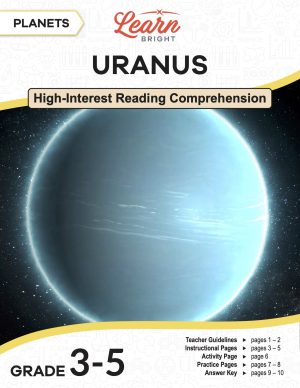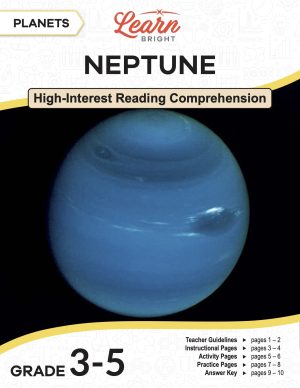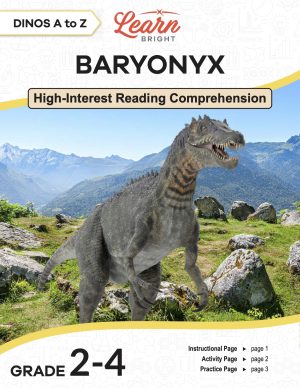Description
What our Circles lesson plan includes
Lesson Objectives and Overview: Circles equips students to define and identify the area, diameter, radius, and circumference of a circle. This lesson includes instruction for the formula to find the area of a circle, as well as a circles of circles activity that leverages peer learning in a fun, meaningful way. At the end of the lesson, students will be able to define and identify the diameter, radius, and circumference of a circle and correctly use the formula to find the area of a circle. This lesson is for students in 4th grade, 5th grade, and 6th grade.
Classroom Procedure
Every lesson plan provides you with a classroom procedure page that outlines a step-by-step guide to follow. You do not have to follow the guide exactly. The guide helps you organize the lesson and details when to hand out worksheets. It also lists information in the blue box that you might find useful. You will find the lesson objectives, state standards, and number of class sessions the lesson should take to complete in this area. In addition, it describes the supplies you will need as well as what and how you need to prepare beforehand. The supplies you will need for this lesson include calculators, scissors, colored pencils, string, rulers, and the handouts.
Options for Lesson
Included with this lesson is an “Options for Lesson” section that lists a number of suggestions for activities to add to the lesson or substitutions for the ones already in the lesson. If you’d like to adjust the lesson opening or closing, you can have your students go outdoors and try to form a perfect circle. To adjust the lesson activity, you can connect all the strings of circles to create one large circle of circles. If you’d like to add an activity, you can do the homework assignment as an in-class assignment, having students search the classroom or other areas of the school or outdoors for circle examples. You could also distribute compasses and allow students to make circles to exchange with a partner to find circle measurements. Finally, you can introduce the fraction 22/7 as pi.
Teacher Notes
The teacher notes page includes a paragraph with additional guidelines and things to think about as you begin to plan your lesson. This page also includes lines that you can use to add your own notes as you’re preparing for this lesson.
CIRCLES LESSON PLAN CONTENT PAGES
Circles
The Circles lesson plan includes two pages of content. We have circles all around us. They’re an important shape in geometry. Mathematically, they’re shapes made up of an infinite number of points on a flat surface or plane that are the same distance from a given point. If you choose a given point, measure the same distance from it to other points and connect the end points, you’ll make a circle.
Circles have different parts, each of which we can measure using a formula or ruler. The circumference is the distance around a circle, similar to the perimeter of a shape. The diameter is the distance across the center of the circle; it’s twice the length of the radius. Next, the radius is the distance from the center of the circle to the edge; it’s half of the diameter. Finally, area is the amount of space inside the circle.
Circle Formulas
To find the measurements for each part of a circle, you often need to use a formula. To find the radius (r), you measure the distance from the center point to the edge. You could also divide the diameter by two. The formula that we use to find the radius is r = d/2 or r/2. To find the diameter (d), you measure the distance across the center of the circle. You could also multiply the radius by two. The formula that we use to find the diameter is d = 2 x r.
To find the area (A), you square the radius and multiply the results by pi. The formula is A = πr2 or 3.14 x (r x r). Finally, to find the circumference (C), you multiply the diameter by pi. The formula is C = π x d or 3.14 x d. Using the formulas isn’t hard! To find the area or circumference, you need either the diameter or radius.
Finding Circle Measurements
The lesson closes with some examples that show you how to use the formulas in the lesson. It gives an example of how to find diameter, radius, circumference, and area.
Circles are all around us, and every circle we see has a diameter, radius, circumference, and area. For example, if you cut a pizza in half, you’re creating a line similar to a diameter. Two radiuses create the sides of a slice of pizza, while the circumference is the distance around the crust. The top of the whole pizza is the area. The next time you eat pizza, think about the parts of a circle!
CIRCLES LESSON PLAN WORKSHEETS
The Circles lesson plan includes three worksheets: an activity worksheet, a practice worksheet, and a homework assignment. You can refer to the guide on the classroom procedure page to determine when to hand out each worksheet.
CIRCLE OR CIRCLES ACTIVITY WORKSHEET
For the activity worksheet, students will first cut apart each of the circles on the worksheet. They will find the radius, diameter, circumference, and area of each, writing the results on each circle. Next, they will shade the circles a different color or draw on each. They will then string the circles together, attaching them with tape or by punching holes in them. Finally, they will join their circles with the circles of the other students in the class, making a circle of circles!
MEASUREMENTS PRACTICE WORKSHEET
The practice worksheet asks students to find the measurements (radius, diameter, circumference, and area) of nine different circles.
CIRCLES HOMEWORK ASSIGNMENT
For the homework assignment, students will create circles at home, searching through their home and finding 15 objects containing a circle. They will list each item on the chart along with its measurements.
Worksheet Answer Keys
This lesson plan includes answer keys for the activity worksheet and the practice worksheet. If you choose to administer the lesson pages to your students via PDF, you will need to save a new file that omits these pages. Otherwise, you can simply print out the applicable pages and keep these as reference for yourself when grading assignments.









